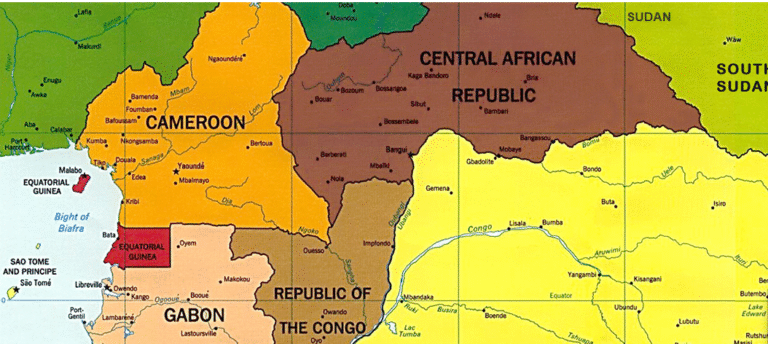Central Africa is a vital region situated in the heart of the African continent. Known for its vast tropical rainforests, diverse cultures, and abundant natural resources, Central Africa plays a significant role in the continent’s environment and economy. The region includes countries such as Cameroon, Central African Republic, Chad, Republic of the Congo, Democratic Republic of the Congo, Equatorial Guinea, Gabon, and São Tomé and Príncipe. Some definitions also include parts of Angola, Burundi, Rwanda, and South Sudan. These nations share geographical features, languages, and historical backgrounds that shape the identity of Central Africa.
Geographically, Central Africa is characterized by its dense tropical rainforests, especially the Congo Basin, which is the world’s second-largest rainforest after the Amazon. This rainforest is critical for global climate regulation and biodiversity. It is home to endangered species like forest elephants, gorillas, chimpanzees, and okapis. The region’s landscape also includes savannahs, rivers, and lakes that support both wildlife and human populations. Urban centers such as Kinshasa in the Democratic Republic of the Congo, Douala in Cameroon, and Libreville in Gabon are major hubs for population and economic activities.
The population of Central Africa is highly diverse, with many ethnic groups and languages. Due to colonial history, French is widely spoken alongside local languages including Lingala, Swahili, and Fang. The region has a young and growing population, which presents both opportunities and challenges. Cultural traditions are strong, with rich music, dance, and art forms deeply rooted in daily life. Popular music styles such as Soukous and Makossa originated in this region and have gained international recognition.
Central Africa’s history is marked by powerful kingdoms before colonial rule. Kingdoms like Kongo, Luba, and Lunda were influential in shaping the region’s cultural and political landscapes. During the late 19th and early 20th centuries, European powers colonized Central Africa. France controlled many countries including Gabon and the Central African Republic, Belgium ruled the Democratic Republic of the Congo, Germany had control over Cameroon and Togo before World War I, and Portugal governed São Tomé and Príncipe and Angola. The colonial period significantly affected the region’s development, borders, and governance structures.
Most Central African countries gained independence in the 1960s, but the post-independence period has been challenging. Several nations have experienced political instability, conflicts, and civil wars, particularly the Democratic Republic of the Congo and the Central African Republic. These issues have affected development and the wellbeing of millions. Despite these difficulties, the people of Central Africa continue to strive for peace and progress.
The economy of Central Africa relies heavily on natural resources. The Democratic Republic of the Congo is rich in minerals such as cobalt, copper, diamonds, and gold, making it one of the most mineral-rich countries in the world. Oil and gas are important to the economies of Gabon, Equatorial Guinea, and parts of Cameroon. Agriculture remains a vital sector with subsistence farming of crops like cassava, plantains, and maize supporting much of the population. The vast forests also contribute through timber production. However, many countries face challenges including poor infrastructure, governance issues, and dependence on raw material exports, which can limit sustainable growth.
Central Africa’s environmental significance cannot be overstated. The Congo Basin rainforest serves as a crucial carbon sink, helping to absorb carbon dioxide and combat climate change. Conservation efforts are ongoing to protect endangered species and preserve the natural habitat. The balance between resource extraction and environmental protection remains a delicate challenge for the region.
Political and social challenges continue to impact Central Africa. Armed conflicts, weak governance, poverty, and limited access to healthcare are among the issues facing many countries. Armed groups in eastern Democratic Republic of the Congo and the Central African Republic contribute to instability. Regional organizations such as the Economic Community of Central African States (ECCAS) and the Central African Economic and Monetary Community (CEMAC) work to promote economic cooperation, political stability, and integration. CEMAC also manages a common currency, the Central African CFA franc, used by several countries in the region.
The future of Central Africa depends on addressing these complex challenges while building on its strengths. With its rich natural resources, cultural diversity, and strategic position, Central Africa holds significant potential for growth and development. International partnerships, improved governance, and investment in infrastructure and education will be key factors in the region’s progress. Central Africa remains a region of both vast opportunity and serious challenges that shape its role in Africa and the wider world.







